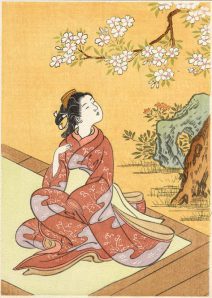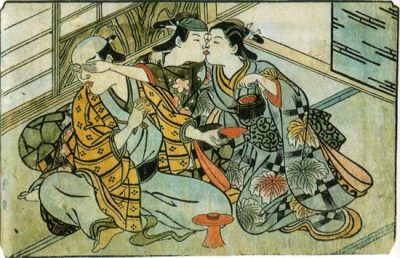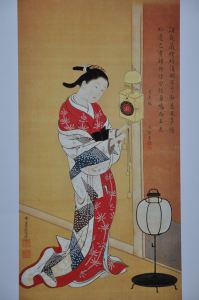Art of Japan and Nishikawa Sukenobu: From the Empress to Prostitutes
Modern Tokyo Times
Lee Jay Walker

The Japanese artist Nishikawa Sukenobu (1671-1750) was based in the cultural city of Kyoto and he created a distinctive style. Indeed, his rich depictions of women appealed greatly to kimono makers. However, while the imperial city of Kyoto conjures up images of high elegance, the artist Sukenobu focused on females from all walks of life.
Interestingly, his Hyakunin joro shinasadame (Appreciating 100 women) that was published in 1723 in two volumes focuses on women from a spectrum that would be extremely risky in modern Japan. This applies to Sukenobu depicting women from the empress to common prostitutes. Yet, far from this angering people, he actually obtained great acclaim in certain artistic quarters.

Of course, one can only imagine if a similar artist did this in the Christian or Muslim world in this period of history, for surely prison or worse would await the individual. Also, like mentioned already, nationalists and conservatives in modern Japan would be scathing of the artist and a likely backlash would occur. However, in this period of Japanese history, the mindset was completely different. Equally important, often learning about respective artists in Japan before the Edo period – and during this period of history – many myths of an all-encompassing stratification are broken dramatically.
Sukenobu’s shunga art based on the notion of erotic art in Western circles, but being more-broader than may first appear, did draw the ire of censors. Despite this, it is unimaginable to think that depicting the empress and prostitutes in the same volumes of work would have been tolerated in Britain or Arabia in the early part of the eighteenth century. Hence, a more liberal political approach to art was granted in this period of the Edo era despite limitations being addressed from time to time.

Indeed, Sukenobu, when faced with censorship and limitations, would express his disdain through the medium of new art. Other artists throughout the Edo Period would take a similar approach with the outcome varying. However, it shows that artists were not afraid to fight the system, irrespective if directives from Edo or from local daimyo leaders.
On the University of Alberta Art Collection website, it is stated, “Nishikawa Sukenobu was a Japanese woodblock print designer, book illustrator and painter. Unlike most of his contemporaries, who worked out of Edo, Sukenobu was based in the imperial capital, Kyoto. He produced book illustrations for the celebrated Kyoto publisher Hachimonjiya Jishō, as well as drawings for several kimono pattern sample books which portray scenes of women choosing kimonos. Sukenobu is best known for his orihon (folded books) and for his unsurpassed skill in presenting graceful and charmingly realized beauties. Sukenobu’s work greatly influenced numerous artists throughout the history of ukiyo-e.”

The legacy of Sukenobu is based on the unassuming and more natural approach to depicting women from various walks of life. Hence, his art of women, production of books highlighting delightful kimono patterns, portraits of Japanese warriors, paintings, and illustrations of high cultural literature, and other angles, all highlight an individual who was blessed with countless talents.
http://collections.museums.ualberta.ca/uaac/uaac/details.aspx?key=18058&r=1&t=1

Modern Tokyo News is part of the Modern Tokyo Times group
DONATIONS to SUPPORT MODERN TOKYO TIMES – please pay PayPal and DONATE to sawakoart@gmail.com
http://moderntokyotimes.com Modern Tokyo Times – International News and Japan News
http://sawakoart.com – Sawako Utsumi personal website and Modern Tokyo Times artist
https://moderntokyonews.com Modern Tokyo News – Tokyo News and International News
http://global-security-news.com Global Security News – Geopolitics and Terrorism
PLEASE JOIN ON TWITTER
https://twitter.com/MTT_News Modern Tokyo Times
PLEASE JOIN ON FACEBOOK